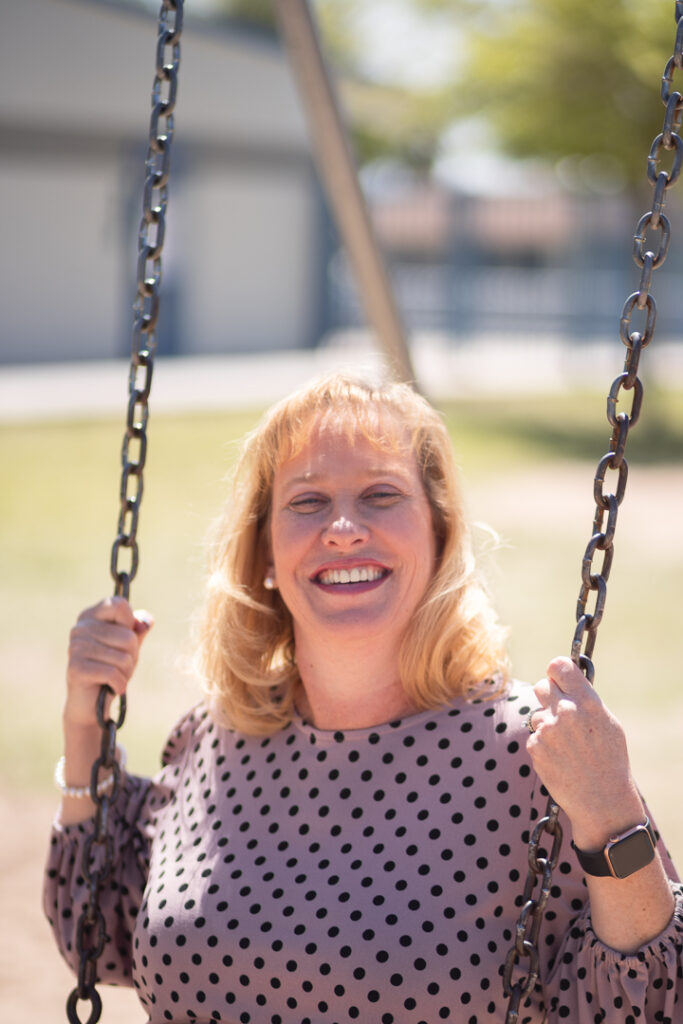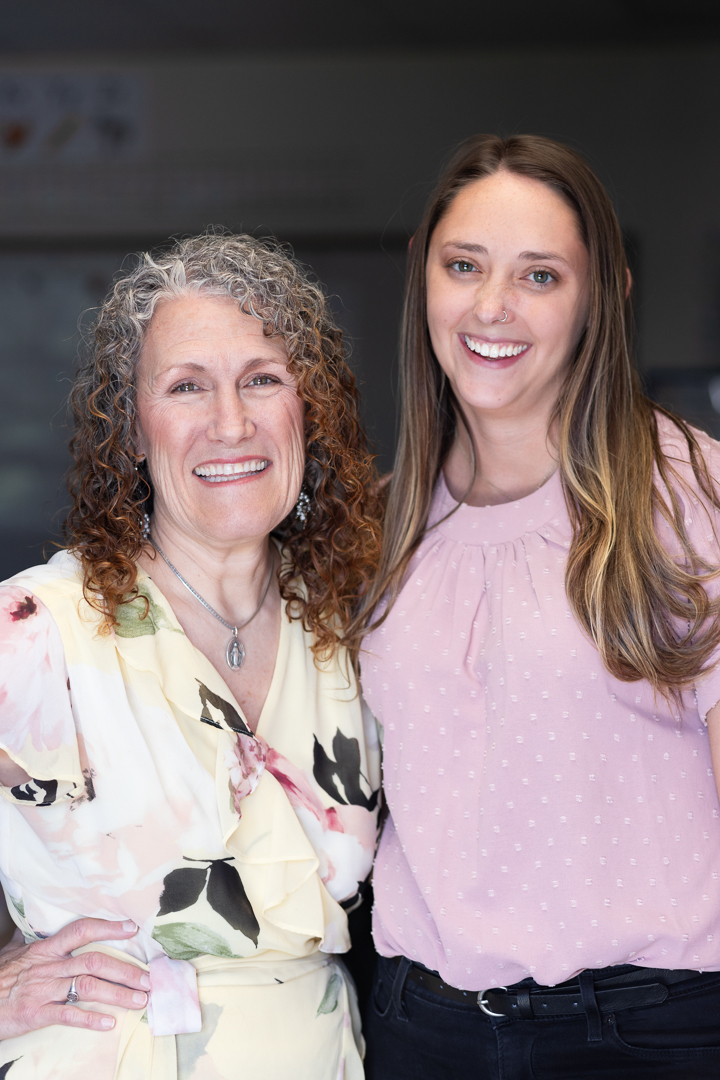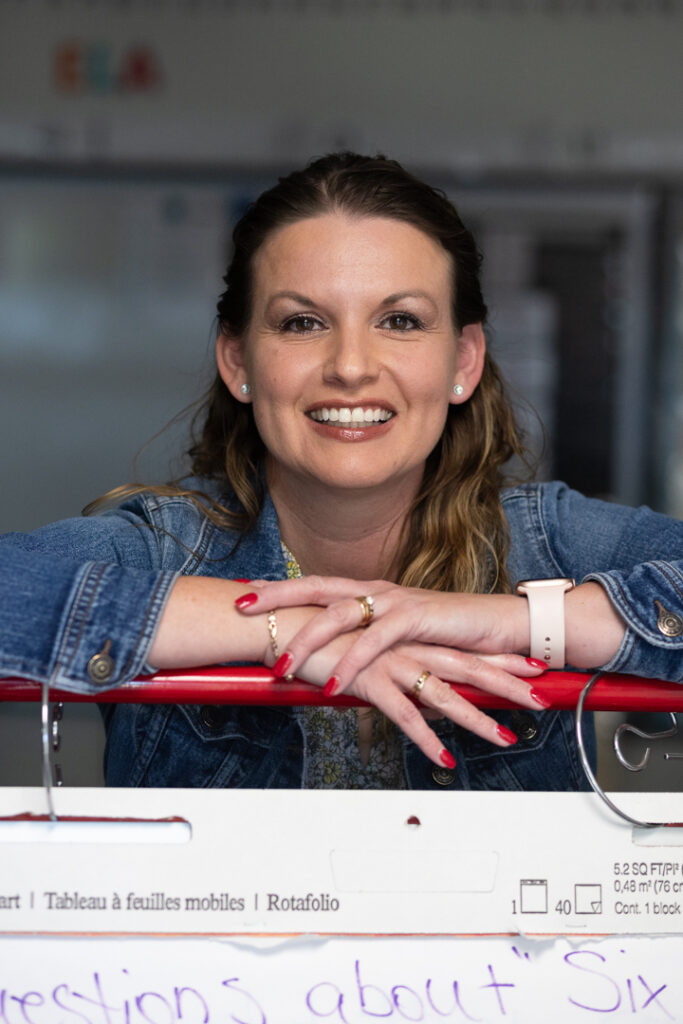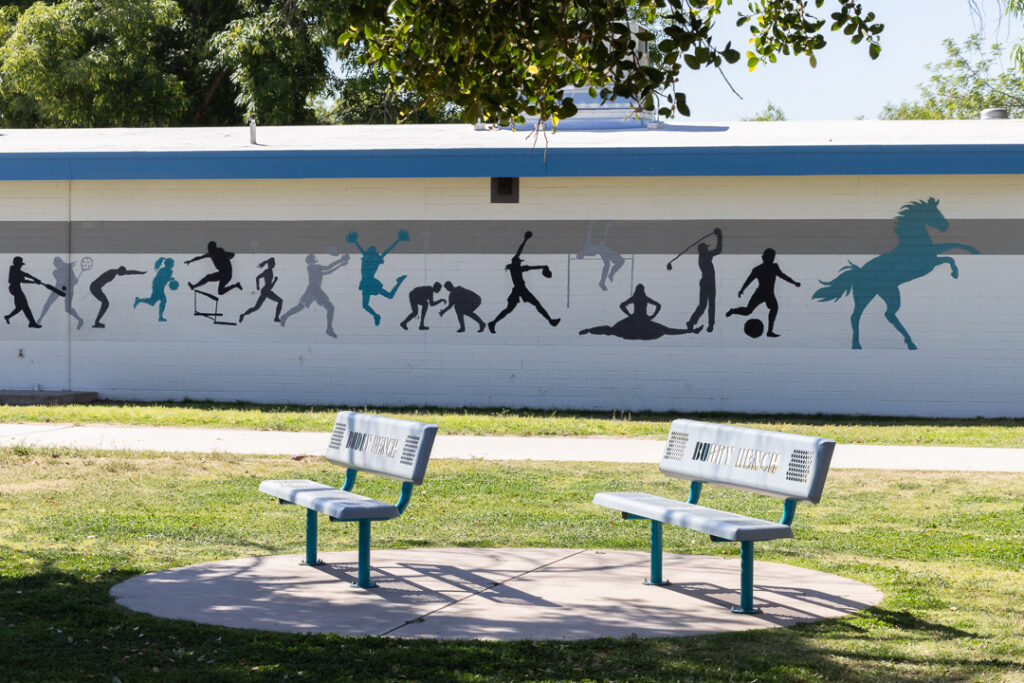Seven teachers were interviewed as a group at Madrid Neighborhood School in Phoenix, Arizona and photographed during their free periods throughout the same day. The teachers were nominated by their community as part of Million Dollar Teacher Project‘s One in a Million program.
Maria Maeda, 4th grade:
What we have here at Madrid is a community where we can start with a student in kindergarten or first grade and support them all the way through to eighth grade. We have teachers who know the difficulties each student went through early in life, so when we get that student, we can go to that teacher and they can tell us a little bit about the family background and what they know about what’s going on. We can better understand and serve that child and cater to those needs.

A lot of times, our students come from survival mode. Their thinking isn’t there, because they’re worried about questions like, ‘Am I going to have enough food to eat?’ or ‘Does my mom have enough money?’ I can tell if a child helps their parents a lot because their focus is on helping me: ‘Can I move this? Can I do that for you, Ms. Maeda?’ So I try to reduce their worry and help them be children at school.
Nicole Marrs, 4th grade:
Oftentimes our families are disadvantaged, and our students show up with resilience unlike anything I’ve ever seen. It’s a beautiful thing to watch them come in and love being here. They love learning.
It’s not always a wonderful experience for them at home. But if they’re having a hard day, for the most part you’re able to connect with them and they can recover. They keep trying. It’s such an awesome thing to be a part of, because they inspire me in my own life to do the same.

Maria Maeda, 4th grade:
We tell the students that whatever they are facing at home, it’s temporary: there are difficulties we have to overcome, but they’re only temporary.
We tell them, ‘This is why you need to read, to grow in your learning, so that you can be a problem solver. If you don’t have a pen, is there another way you can solve the problem? If we’re having a bad day, how can we make it better?’
We try to minimize the stress while we have them here at school. They might go home and experience the same situation again, but then we get them again tomorrow, and we build them up over and over. They know their parents are often working for survival. We keep telling them it’ll be okay. It’s not permanent. It will be all right.
Nicole Marrs, 4th grade:
It’s so critical that the public understands how hard we work to plug the cracks and how much teachers need support, because otherwise, we are failing these children. They don’t get a say right now, so we need to act for them. They have incredible abilities.
I hope that people understand how important it is for everybody to come together. No matter our differences, please understand that we are in this to do well and to do good for these kids.



Jennifer Frick, kindergarten:
Because our school is K-8, we’re able to use past teachers as mentors if we have a kid who’s struggling. We can say, ‘If you do a great job, you can go back to Miss Hansen and be a helper in her classroom.’ Or maybe we have a student who needs a break before they can rejoin the class, and we can send them to have a chat with a teacher they had in a previous year. It’s helpful to have that community.
Cristine Bartoletti, 2nd grade:
Jennifer is our kinder teacher, and she was the most recent teacher celebrated by Million Dollar Teacher Project. When a teacher gets celebrated, it’s supposed to be by their class and their grade level. But for Jennifer, all of the kids wanted to come. The whole lot of the school was full — eighth grade kids out there with all the kindergarten kids. Everybody was out there, because a majority of them have passed through that classroom in some way, shape, or form.
The fact that we’ve had that continuity is really important for the kids, in their lives. It’s special to keep a teacher for so many years. One of her former students even works here.

Cristine Bartoletti, 2nd grade:
We have all these options: Catholic schools, prep schools, charter schools, public schools. But if a child has a behavioral issue, or they’re not able to keep up academically, the default is they’re going to go to the public school in their neighborhood. And as a public school teacher, my frustration over the years has been the lack of funding that comes with that.
We are happy to take these children. That’s not the issue. But public schools are taking them in without the additional support that’s required.
I feel like there’s a lack of equity when it comes to the different types of choice that are out there and what’s required of some but not others.
Jenny Hansen, 2nd grade:
It’s not that private school is wrong — it has its place. But public school does so much for our communities and our neighborhoods. Especially for kids in the demographic at our school, there are so many opportunities, and even basic things like meals provided by food services. During the summer, we continue our lunch program so that our students can eat.
Cristine Bartoletti, 2nd grade:
We have students who live in a hotel that has been converted to a homeless shelter. In their eyes, they don’t realize they’re in a shelter, but they do understand that something is different. It’s a hardship for families, and our school does a really good job of supporting and overcoming it. There’s a program called McKinney–Vento that allows us to help with food, lodging, and clothing. We also connect students with counseling and social-emotional support they might need.
We can’t control what happens outside of our four walls. However, we have the capacity to support and influence what happens when students come in, so it’s not a heavy concern on their heart and mind. Our students tend to know more about what’s going on at home than most students their age in a different socioeconomic population.


Gabriela Buscher, 1st grade:
My kids go to public school, and I’ve been questioned about that. People want to know why I don’t send them somewhere else. My last name is Buscher, because that’s my married name. But my maiden name is Cervantes.
Growing up, my parents didn’t speak any English. I was the translator. I made the appointments. I helped as they learned English. So when we talk about the kids here, I am one of these kids.
I know what we as teachers provide at public school. I know my boys are getting what we give to these kids every day. I know what happens when you don’t have this room full of teachers who provide for the students, and I know what happens when you don’t have supportive parents.
We have to be here for the kids in our community. I know where they come from, and that’s why I work here and not in another district. If they don’t have us, and they can’t get the support at home, who’s going to help them?
I am one of these kids.

Cristine Bartoletti, 2nd grade:
Somewhere in my teaching career, I heard this phrase, and it’s what keeps me coming to school every day: ‘Be the one.’
I don’t think I’m the perfect one. I don’t think I’m the only one. But in the life of a child, we are called to be the one, because they only need one. A child who is at risk needs only one person to believe in them and to think that they’re awesome.
When kids enter with trauma, they need one adult to truly believe in them. One, that’s it, only one. Whether you’re a teacher or outside of school, you can be the one for a child.

Whitney Henkel, 7th & 8th grade:
Everyone has that right to the pursuit of happiness, not just those who grow up wealthy enough or have certain family circumstances. Everyone has the right to a quality education. And to me, it’s scary to think about people finding legal ways to enforce prejudice and separation of the classes. I think as a country, we decided pretty clearly against that through court cases over time, because we know that does not support American values. It does not support what’s in our Constitution.
It’s easy to rag on public schools when so much has been taken out of them. You take one look at the test scores and go, ‘They’re not performing the way they should.’ Right now in Arizona, people will respond with, ‘But we gave you that Red for Ed money.’
Yes, thank you. But we’re in a boat with all these holes, and we’re sinking, and you plugged one. And now there are 25 other holes in the boat that you haven’t touched. Thank you for helping with the one. But what about the rest?
So then we ask for more support, and we’re told, ‘Well, we just gave this to you. How come you’re not better? Let’s send them all to private school.’
Look at it this way: let’s say a private school is performing better. At most private schools, if a student has disabilities, the answer is, ‘Sorry, we can’t accommodate that.’ There is a standard, and if you can’t do it, you’re out. So of course the performance is fantastic, because you stack the deck by removing anyone who isn’t the norm. Of course the scores are higher, because only students with high scores can attend.
There are some instances where a private school education makes sense. But to demonize public school in favor of private school — that’s not promoting what we need as a society.
We have to have educated people. It cannot rely on chance. It cannot rely on your socioeconomic status. It shouldn’t rely on that. Everybody has the right to a free public education. And if we keep taking that away, at what point are we losing our values as a country?



Nicole Marrs, 4th grade:
Talking with other parents, people will say to me, ‘Have you looked at the test scores? Have you looked at the scores of this private school or this charter school?’ And what I think people don’t understand is that it’s selective. Those schools are performing well because they have the opportunity to disregard students who aren’t performing at grade level academically or behaviorally.
And then those students come to us, and we accept them, and we love them. There are all these gaps that we then work to fill. But now those students are a part of our test scores and our performance levels, whereas that charter or private school gets to keep their beautiful numbers. Please remember that when you look at our test scores. Those test scores in isolation are not indicative of the quality of teaching at a school.
What I see in my fourth grade classroom is that students carry such a heavy weight with these tests. They think these tests define them. I try my best to help them understand that the people who score these tests or look at their results don’t know who these kiddos are. They don’t get the opportunity to spend every single day with them. They don’t know that they have siblings or are involved in sports or have a natural love for dancing.
They truly are excellent readers, but the state test is a heavy burden for children to bear. In our state, students are given a summative test in April before the year is up and are expected to show proficiency. Throughout the year in my classroom, we monitor their proficiency, and I witness their growth day in and day out. However, I ultimately can’t give any input on who’s proficient or who needs support. The test dictates that. It’s a one-size-fits-all approach, and it’s frustrating as an educator to know that my students are so much more than that label of minimally or partially proficient on a state assessment.


Whitney Henkel, 7th & 8th grade:
I have a seventh grade student who works hard every day. He’s done extra projects, he’s done presentations for parents, and yet he got his test results and came up to me so full of anxiety, asking: ‘Miss Henkel, am I going to be ready for high school? I’m still minimally proficient. I’m trying so hard. I just don’t know if I’m gonna make it.’
It’s disheartening when students see that label and take it on. They’re kids. They don’t understand that it’s a one-time snapshot that’s testing them in only one way. They just see, ‘I’m supposed to be up here, and I’m way down here.’ And especially for the type of kid who does everything right, when they can’t figure out how to do better on a test I have no control over, that’s so hard to see and so hard to support in the classroom.
We have kiddos who haven’t passed the AZELLA test yet, which means we have data from the state that says they cannot read or write in English. Yet they still have to take the state test, and we get labeled for that, even though the state knows they can’t understand the questions.
The same thing applies to students who are dyslexic and haven’t fully learned how to read. Research tells us that listening to a text is just fine and accommodates for dyslexia, but the state test doesn’t allow them to hear the questions aloud. Giving a kid a minimally proficient label and docking a teacher for that score — is that capturing what we want? We have a kid we know can’t read, and we’re giving them a reading-based test when there’s an alternative test that could check their content knowledge. Why put them through that? Why not use that time more strategically?
For students who don’t have a disability, what I’ve found across the board is that it’s more of a test of how you grew up. If you grew up with parents reading to you every day in English, then you’ll be successful on this test. But if you didn’t grow up that way, you’ll be negatively impacted.
We have teachers who work tirelessly to turn that around. However, it requires a sacrifice on the part of teachers to reach that point, because we’re swimming upstream.

Jennifer Frick, kindergarten:
We don’t do standardized testing in kindergarten, but we do take tests that measure growth. And that’s what we have to look at: a student’s growth over time, not how they compare against every other student in the United States. We don’t necessarily look at whether they have all reached a certain level. Instead, we consider where they started and how far they’ve come by the end of the year.
We have to look at the children themselves, because not all kids are good test takers. As a student, I had test anxiety, and I was not a good test taker. Some kids do well on paper-pencil tests, while others perform better on manipulative tests. We have to look at the child rather than applying a one-size-fits-all approach.
I have a student who came into my classroom nonverbal. Didn’t talk at all. And this child can now write their name, knows other sounds, and is starting to add. Will this child be highly proficient in kindergarten? No. But has this child made leaps and bounds of growth? Yes, he has. This child has made huge gains in the classroom. He has succeeded.

Cristine Bartoletti, 2nd grade:
COVID started three years ago now. So as a second grade teacher, that impacts us a lot because these are the students who didn’t come into school as kindergarteners. They went to school online. And so they learned their letter sounds online, and they learned how to read online.
We didn’t come back to school as a district until March of 2021 — and only if they wanted to. So some of these students missed three-quarters of a school year. I think learning online was challenging for our students, especially our kindergarten students who had never experienced being in school. Sometimes we had multiple kids learning in one room at home: he’s doing fifth, he’s doing second, she’s doing kinder. Learning to read, write, and learn in what should have been a structured environment was especially challenging for them and we saw the full impact of that in second grade this year.
So we have second graders now where everybody did everything that they could to keep them on track. I’m proud of all of our kids, and we’ve had this conversation with them: they have worked so much harder to achieve that growth because of the fact that they were educationally deprived of that foundational year of learning how to read.
Jenny Hansen, 2nd grade:
I have a cool position because I taught those very same kids. I was their kindergarten teacher, and now they’re circling back to me in second grade. This year has just amazed me. I saw those kids who were laying down and eating chips online. One girl was throwing her shoes at everybody, throwing a tantrum where I had to have her removed from the Zoom. And now she’s reading.
Those students are writing sentences, and they’re so invested in their learning. Their growth is amazing. But then you go to our test scores, and it’s just ‘minimally’, ‘minimally’, ‘minimally’… it looks like these kids know nothing. And we can tell you from being in the classroom: that is not true. These children are not minimally anything.







Gabriela Buscher, 1st grade:
I have a student who only knew four sounds at the beginning of the year. And every time you corrected her or offered to help, she would cry hysterically because she thought she couldn’t do it.
Now, she knows all her sounds. She’s blending words with five letters, she’s putting a suffix, she can tell you anything that’s in that word — she’s as proficient as my highest kid, and she doesn’t cry anymore. She’s finally learning how to read. There’s not a lot of support at home, but she’s so invested in trying to make herself better.
The kids encourage her: ‘Don’t cry, we’re all here. We’re all gonna help each other.’ And she’s made so much growth that it just makes your heart burst.
I think the growth comes from high expectations. You can cry, but you’re going to dry your tears, and you’re still going to read the word. I know she isn’t going to learn this at home, so she has to get it from us.
We are here to help them and to hold them accountable. It doesn’t matter if they’re writing an essay or if they’re reading a word that has three sounds. They have to be held accountable to the highest level that they can be held so that they can be successful.
I say, ‘You can’t do it? That’s why you’re here at school. You make a mistake? That’s okay, we all make mistakes. Let’s fix it.’ That’s what took the tears away. Because she realized, ‘Oh, it’s okay if I get it wrong, because they’re going to be here to support me.’ And even now, if she makes a mistake, her neighbor will say, ‘Oh, remember? This is the sound that it makes.’ And she says thank you to them now, where before she would cry. So it’s that emotional part too, for them to know that they’re loved.
They rise to our expectations.


Gabriela Buscher, 1st grade:
As corny as it sounds, we have the future in our rooms. These kids are going to be adults someday, and they’re going to be leaders. If we don’t set them up for success, we will see that when they are the ones making decisions. We’re going to have to live with what we put out there, because we’re the ones who are charged to help them grow.
Cristine Bartoletti, 2nd grade:
We don’t want to create a divide, we want to create unity. And in order to do that, we need people to understand that public education is important. You don’t need to be a teacher. You can come and volunteer in a school, you can volunteer to help kids in your community — there are other ways to teach and be influential in the life of a child.
Nicole Marrs, 4th grade:
And also, advocate for your teachers. Maybe you can’t come in and volunteer, but please speak better of us. [everyone laughs]

Maria Maeda, 4th grade:
I retired six years ago, but I came back this year. So you can ask me, ‘Why am I here?’
I have a passion for what I do. I love what I do. And my heart is in it, in the moment when I first started, so I teach as if it was the first time.
I like getting up in the morning. I like coming to school. When I retired, I never left, because I kept coming back to volunteer. I was always around. This is a great school community, because we have each other.
Jennifer Frick, kindergarten:
I think it goes beyond just the employees, too. It’s the students. Today I had one in the front office who didn’t want to come to class, and he was crying. Three kids came up to him and said, ‘Come on, let’s go together,’ and he stopped crying immediately when they walked in the door.
Whitney Henkel, 7th & 8th grade:
I’ve taught in several different schools, and there really is something special about these Madrid kiddos. I could teach these kids the rest of my career, and I would have no problem doing it. I’d be happy to. They have such heart here.
Jenny Hansen, 2nd grade:
Everything we do, all of that is for them and for their futures. Your class isn’t just a class. They become your kids. It’s unbelievable how invested you get in each of their lives. Especially with the littles — we know everything about them, because they tell us everything.
Nicole Marrs, 4th grade:
Arizona ranks 48th out of 50 in education funding per student. So while I think all seven of us in this room are highly qualified, high-performing teachers, there’s really only so much we can do when education is not prioritized at a state level.
We all spend a lot of money out of our pockets in our classrooms. But all of that is never going to make up for what’s not being done from the top down. Madrid’s a beautiful school. It’s a wonderful school. We have staff and admin who care, love, and adore these kids. But caring, loving, and adoring is only going to get us so far when there is such a difference between here and more wealthy communities. Our hands are tied in so many situations.
Cristine Bartoletti, 2nd grade:
Yes, and: we’re in it to win it for our kids.
–Teachers at Madrid Neighborhood School
Phoenix, Arizona

